
The luxury fashion House is breaking new grounds by venturing into the gaming and virtual world—Fortnite. How? By letting players to experience the Versace Mercury sneaker in-game for a limited time.
The collaboration adds a fun twist by inviting players to Murder Mystery (Fortnite Creative map) and explore an archaeological dig site. The first to discover the Versace Mercury sneaker wins and discovering the digital treasure comes with a special in-game perk and puts that player in the spotlight for that round. To promote the sneaker, Twitch streamer Agent 00 offers his viewers a chance to win a real pair of said sneakers during his stream.
That's not all. The collection also collaborates with Snapchat, offering a Snap AR experience and a Bitmoji digital collection. Platforms like Fortnite offer a new medium for brands to convey their story and visual identity in gamified and social ways. This approach gives players relevant rewards that enhance their experience, whether through gameplay or cosmetic items for self-expression. With this collab, Versace can continue its commitment to virtual worlds and the value of digital fashion items.
In the real world, the Versace Mercury collection is made from high-quality calf leather and features a single sole, embodying both futuristic design and versatility. Sci-fi inspired, these sneakers have a complex structure of 86 precisely crafted components. The upper and lining of each pair alone consist of 30 pieces, all seamlessly cut and stitched together.


Fortnite is free-to-play and is available on most platforms including PlayStation 4; PlayStation 5; Nintendo Switch and Xbox Series X/S.

Assassin's Creed is Ubisoft long-running tentpole series. It started in the Holy Land during the Crusades to the far-reaching terrains of Ancient Greece and now the latest chapter will be set in feudal Japan. We have always thought that shinobis would be a natural fit in a series about assassins but given the glut of the Assassin's Creed world, can this latest instalment reinvigorate the franchise?
Assassin's Creed: Shadows was first known as Assassin's Creed: Codename Red when it was leaked in 2022. (It was leaked alongside another game-in-development, Assassin's Creed: Codename Hexe—about the witch trials in the Holy Roman Empire.) Shadows was further leaked at store listings while a marketing push was made via an ARG that led fans to the number, "1579", which is the year when the first Black samurai, Yasuke, was believed to arrive in Japan.
You'll get to see Yasuke in the trailer, alongside Naoe, as the two of them embark on a quest against the backdrop of civil wars and social upheavals during the Sengoku period. It appears that you can switch between Naoe and Yasuke with different play styles—stealthily as a shinobi or more combat-based as a samurai, respectively. Players get to explore an open-world feudal Japan, where according to Ubisoft's creative director, Jonathan Dumont, Shadows will be "a little bit more to the size of Assassin's Creed Origins".
Other reported features for Shadows include a light metre, where you can snuff out light sources so that you can hide in the shadows; there will be a settlement system with customisable buildings, dojos, shrines, armoury and more; seasonal changes that will impact the environment you're in.
The trailer looks promising. And given the sudden interest in historic Japan, it's high time that we have a Japan-centric chapter to the Assassin's Creed franchise.
Assassin's Creed: Shadows is expected to be released on 15 November, 2024 and is available for Microsoft Windows, PlayStation 5 and Xbox Series X/S. Pre-orders are now open.

“It is frustrating that people still think of board games as being like Monopoly, just going on forever and ever, with players sat there circling the drain until it’s over,” laughs Chris Backe, “when there’s a new generation of board games that allow us to explore aspects of ourselves we don’t generally get to explore. It’s like the movies or novels, only with games you’re not a watcher but a participant. With games, we get to step out of our skin”.
Backe is a rare beast: he’s a full-time board game designer, always working up 20 or so new concepts for his company No Box. He’s testing them, seeing what works and what doesn’t, and over recent years seeing his industry enjoy a huge revival—to the tune of USD16b in annual sales, thanks in part to the pandemic. Over his years in the business, he has concluded this: it’s not that people like to play, but that they need to play. And not just in structured ways, as with games or sports, but in manners that have no purpose at all beyond the pleasure of doing them. We’re not just talking about children here; we’re talking about grown-ups too.
“I’m a strong proponent of the idea that adults should play, by which I mean play that is defined as self-chosen and self-directed, not driven by coaches, not something you have to do,” says psychologist Peter Gray, author of Free to Learn and one of the world’s leading scholars of play. “All play in a sense has rules, maybe handed down [from] generation to generation, sometimes implicit, sometimes just made-up on the spot. But we all need to play more. Play has made us what we are”.
And not just us. All mammals play, from dolphins to dogs. One theory proposes that those mammals are capable of using objects as tools. Like a monkey using a stone to break open shellfish, for example, or the first instance when a stone is used as a toy. Utility came later. Others stress how, despite its energy expenditure, and even the occasional injury, natural selection has not weeded play out, as might be expected.
In part that’s because play is often a process of exercise or stress relief, both good for us. But it also has a much more important role. One key idea—first proposed by Karl Groos in his The Play of Man (1901)—is that play not only allows the nervous system to develop ready for certain activities later in life but it also functions as a kind of practice. Of those skills required for survival, learning to cope with unexpected events, and preparation for doing things as a competent adult.
The skills and values explored in play can be specific to a child’s culture—Groos suggested the likes of hunting, skiing, canoeing or horse-riding. It seems that children’s readiness to play at these is instinctual; they observe and mimic without being prompted. The skills can also be more universal. Play, for example, is often social—first is the need to decide together what and how to play, so cooperation and communication are essential.
In fact, animals that are more dependent on their group for survival tend to play more, with, as Gray argues, hunter-gatherer societies positively suffusing nearly all they do with play. From religion to work and ways of settling disputes, all the better to suppress any drive to dominate. In play, you have to learn to control your impulses, like in play fighting where you’re almost hitting your opponent but never actually. It’s as much mental as physical too. Being self-directed, play also fosters creativity, imagination, experimentation and independence.
It’s why, argues Rene Proyer, professor of psychology at the Martin Luther University in Halle-Wittenberg, Germany, while some of us play in more obvious, more socially acceptable ways—he cites those who play video games, use colouring books for “mindfulness” or who build the complex sets LEGO created specifically for adults (“Adults welcome,” as its ad has it)—we all tend to play in one way or another. Humour, fantasy, daydreaming, sexuality all offer forms of play, as does language, as the very phrase “wordplay” suggests. People often use play as a means of getting through repetitive tasks, inventing challenges for themselves, he notes.

“[If you play with children] you soon learn that almost anything and everything can be play. But, in a way, adults are more free to play because our worlds are larger [than children’s],” Proyer suggests. “And there are good reasons to continue to play as adults, even the opportunity it brings for continued learning. But the easiest answer to the question of why adults should play—and the most correct one—is that it’s fun. Play can be used to maintain alertness, or to keep you in the moment. It’s through play that you can enter a ‘flow state’.”
This idea, of being fully immersed in a feeling of energised focus and enjoyment, is now more commonly cited about sport or the production of art—but it was first proposed, by the psychologist Mihalyi Csikszentmihalyi in 1990.
And yet the evolutionary necessity of play has long been side-lined, even denigrated. Sebastian Deterding, professor of design engineering at Imperial College, London, and a researcher in playful design, says play got in the way of industrialisation and its need for reliable labour. Capitalism saw play as a waste of time; play became associated not with positivity but with the Bacchanalian wildness of festivals.
“Even in the Medieval period kings would complain about peasants playing cards rather than improving their archery or doing something ‘useful’. And religions have often had bans on games because of their relationship to gambling,” he says. “Today in the [first] world the norm is to have roles and duties — as an employee, as a parent—while caring for oneself and one’s dependents. And play doesn’t fit into that. It’s seen as trivial in a culture in which everything is measured in terms of productivity. Even sleep and fitness are about improving your ability to fulfil your social role, while sport is considered to have the necessary function of being a community ritual.”
Historically some games got what Detarding calls a “free pass”: early board games—the likes of Snakes and Ladders—were morality tales dressed up as games, while chess or backgammon were associated with a kind of brain-training. Even when play is discussed today there is, he says, often some vague kind of attempt to legitimise it—it’s a way of getting the family together, or it’s for the improvement of one’s well-being, “even that the PlayStation you just bought was in the sale,” he laughs. “But attitudes to play are changing—there’s more institutional approval, for example, with big museums running exhibitions on video-gaming; there’s more questioning of the values we’re expected to subscribe to. There’s also been a lot of boredom over recent years”.
“In one sense play is on the up, especially coming out of the pandemic. People had a lot of time on their hands that previously they hadn’t, and turned to play as something to do, even as a way of dealing with the situation,” says Jeremy Saucier, assistant vice president at The Strong National Museum of Play in New York and editor of the American Journal of Play. “Sure, play has long been associated with childhood—play is ‘what kids do’—even as many adults became more open to it, and even if they might not have called it ‘play’. Yet there’s still a certain risk in revealing that you ‘play’ in modern culture. Play is still considered to be frivolous in a highly competitive world”.
Unless, of course, that highly competitive world co-opts play in the pursuit of improved efficiency in business or consumer engagement with a product: the so-called ‘gamification’ of the workplace and education, in training and marketing. This reveals a philosophical conundrum. “Play has so many possibilities and there are ways to harness it to bring all sorts of benefits. But if you assign a purpose to play, is it still really play?” asks Saucier. “The danger is to recognise that play is good for us and then trying to throw play into everything. Then it just becomes performative”.
Remarkably, even play among children is under attack. Ana Fabrega, founder of Synthesis—an educational system based on the idea that children are hard-wired to learn skills the likes of collaboration, autonomy and competence through play—was a career teacher with experience in school systems around the world. She notes how with the notable exception of the education system in Finland, time for free, unstructured play has increasingly been squeezed out of school timetables in favour of academic study and the pursuit of higher grades.

It’s not just in schools either. “We’re seeing the rise of a culture of safetyism in which parents don’t want to expose their children to even the slightest risk, even though the instinct to explore risk [through dicing with heights, speed, dangerous tools or elements, and so on] is fundamental to children from a very young age,” she says. “Play is being trained out of us, so it’s no wonder that by the time we leave education, we tend to think of it as not being serious. But we have to take play seriously—it matters, not least because it’s the engine of invention”.
According to Peter Gray, the last 50 years or so have seen other cultural influences gradually erode children’s access to free play too, notably the rise of TV and, more recently, gaming devices keeping children within the domestic sphere rather than being “free range” and out in the world. In parallel, this period has seen a huge rise in all sorts of mental disorders among young people.
“The whole reason why childhood is so long is to acquire the characteristics necessary to be an adult. You’re gradually given more and more freedom and so must learn to solve your own problems—how to keep your playmates happy, how to deal with differences,” says Gray. “Now we have generations who have grown up without that [training] and absolutely it’s had a [negative] impact on them”.
In 1955 the Dutch historian Johan Huizinga, in his book Homo Ludens (playful man) proposed that human culture arises and advances through play; that the pillars of culture, from art to literature, philosophy to the law, arise at times when adults had the freedom and time to play. It’s through play that we innovate. That might not bode so well for a globalised world in the 21st century.
Indeed, Gray says there is evidence to suggest that the good mood fostered by play allows people to perform better at the kind of problem-solving that requires novel thinking. And that, since the 1980s, curtailed childhood play has had a marked negative impact on creativity, as far as it can be measured. “Play teaches creativity, so now we’re producing far fewer creative people in an era when society really needs people to be creative,” he argues. But, he adds, we’re also seeing it reflected starkly in what he notes as the reduced independence and competence of current late teens and 20-somethings. He worries that this will likely become the norm for future generations unless the greater free rein to play, which was historically given to children, is rapidly reinstated.
“We’re seeing high rates of emotional breakdown among college students, for example, often for what would have been considered very trivial reasons a generation ago,” he observes. “Lacking the beneficial childhood experience of play, they haven’t learnt to steel themselves [against challenges], to understand that you can have a negative experience and somehow you survive. There’s an inability to accept negative consequences and to take responsibility for their own failures. Our changing regard for the importance of play [in childhood] is behind all of this”.
That also suggests why we need to take a more positive view of play more broadly, not just for tomorrow’s children and the adults they will become, but for adults today. Rene Proyer notes that the huge popularity of smartphone- and console-based video gaming—an industry that has long since eclipsed the film business, for example—suggests that the desire is there. The average age of a gamer now? 33, with players equally split between men and women. We just need to be more open about embracing the benefits of play—and to recognise that playfulness as a state of mind is a skill that can be developed.
“For a long time, it was thought that video games were just for kids. Back in the ’80s I was almost embarrassed to tell other grown-ups what I did for a living,” says David Mullich, the leading video-game designer for the likes of Disney, Apple and Activision. “Now everyone is slowly discovering how essential play is. It’s in play that we cast off our responsibilities, fears and certainties to engage in challenges that have no material outcome. It’s through play that we find catharsis. We find new meanings in the world. Without play, we wouldn’t be fully human.”
"War. War never changes." While we don't hear those iconic lines from Ron Perlman, we do get to hear the familiar crooning of The Ink Spots' "I Don't Want to Set the World on Fire" played over the aftermath of a nuclear fallout. Adapted from the video game series of the same name by Bethesda Game Studios, we follow Lucy (played by Ella Purnell), a descendent of the survivors who took refuge in fallout bunkers aka Vaults, as she venture out of her place of safety into the Wasteland once known as Los Angeles.
We're in the golden age of video game adaptations. While it's an adaptation for the online streaming platform Prime Video, the trailer looks like its staying faithful to its source material. Jonathan Nolan and Lisa Joy, the showrunners for Westworld, are helming this adaptation. We see the Vaults and its inhabitants; the Brotherhood of Steel; plenty of Vault Boy bobbleheads (is the series setting up an easter egg hunt for the viewers?); a lot of retro goodness; a trusty canine companion and ghouls. Well, a ghoul played by Walton Goggins. We saw no indication of mutants but according to Bethesda Game Studios producer Todd Howard, who directed various games in the series, the series is set in the same continuity as the game. So, we may see the appearance of mutants or even Deathclaws.

But the one thing that we saw that was really encouraging—the wry humour. Evident in the games, there's humour in a devastated future. And why not? A little laughter helps get you through the bad times.
So, for those who are waiting for the next Fallout game, the Prime Video's series will scratch that itch. It's expected to be released on 11 April, one day earlier than it was previously announced.
War never changes. And in this context, maybe it's for the best.
Fallout will be released only on Prime 11 April.
Thanks to a leak, video game company Rockstar Games, released its long-awaited trailer for its upcoming Grand Theft Auto 6. This time our open-world is set in Leonida (GTA's version of Florida), where Vice City (GTA's version of Miami and also the huge locale in Grand Theft Auto: Vice City) is featured.
We follow Lucia and her unnamed partner as they make a living wage... by engaging in a stick-up. And given the nature of this game, they would probably dip into other less-savoury activities that would cause your mom to cross herself. With Tom Petty's "Love is a Long Road" playing, the trailer shows all the glories that are pulled from the headlines of actual Florida. Let us count the ways: an alligator in a swimming pool; twerking on the roof of a moving car; a police raid; an alligator in a convenience store; a strip club; an irate elderly woman holding a claw hammer in each hand... Leonida is the most Florida that Florida has ever been.
The game will be released on next-gen platforms. Specifically the Xbox Series X/S and PS5 (sorry PS4 and Xbox One users). This move makes sense given the graphics we've just seen from the trailer. But according to a presser given out by Rockstar Games, GTA 6 will skip out on a PC version. It's not an unusual move for the company given their MO for its previous games release. Games like GTA IV, GTA V and Red Dead Redemption 2 gave priority to console releases. PC ports came at a very later date.
At least, we get to play the game next year when it rele-

Ah, damn it.
Well, at least we can soak in the trailer while we wait.

The anticipation is palpable: Spider-Man 2 is set to swing onto the PlayStation 5, promising to be bigger, bolder, and even more thrilling than its award-winning predecessor. The buzz is hardly surprising; the game has been put together by Marvel and Insomniac Games, the who previously built iconic franchises like Spyro and Ratchet & Clank. Insomniac was ultimately acquired by Sony after the huge success of the first Spider-Man game, and since then has been diligently at work on the sequel.
But what can fans expect from Spider-Man 2? We caught up with Bryan Intihar, the creative head behind the series, to delve into the narrative depths, gameplay innovations, and the vision driving this eagerly awaited sequel.

Bryan Intihar: The symbiote story has always been significant for any Marvel or Spider-Man fan. Its portrayal over the years has resonated with many. Given that this is technically our third Spider-Man game—following Spider-Man and then Miles Morales—we aimed to take our characters to uncharted territories.
Emotionally, we approached the symbiote as a metaphor for addiction. This perspective isn’t solely about the impact on Peter, but also on his circle of friends and family. It’s a narrative that pushes Peter into unfamiliar territory.
As players delve deeper into the game, the bond with the symbiote intensifies and Peter undergoes profound changes. There’s a moment in the launch trailer where Peter exclaims, “You’re not the hero.” It’s hard to fathom Peter ever making such a declaration.
On the gameplay front, this presented a golden opportunity for us to showcase a different facet of Peter. Both Peter and Miles are incredibly powerful characters with their unique superhero abilities.
Introducing the symbiote allowed us to amplify and celebrate the sheer, raw strength it offers. The symbiote, in essence, isn’t just an alien entity. It profoundly influences Peter emotionally and redefines gameplay mechanics. It’s been genuinely exciting for our creative team to stretch our capabilities in narrating Peter and Miles’ story in ways we hadn’t explored before. This shift has dynamically impacted both gameplay and narrative, and that’s what excites us the most.

Bryan Intihar: When we started the journey with Spider-Man 2, we began from the ground up. Our aim with the first game was to showcase that we could craft a compelling Spider-Man experience. The feedback from the first game gave us clear indications of what players loved, and the subsequent message was: “Don’t tamper with what’s already working.” For instance, swinging and traversal mechanics were highly appreciated. So our approach was to enhance it further, not overhaul it.
One of our guiding principles has been to juxtapose the superhero fantasy with a relatable, human story. While we dive into the darker realms with characters like the Symbiote and Lizard, our intent remains to narrate a heartfelt story.
Reflecting on areas of improvement, we realised that boss fights needed more depth. We also wanted to amplify the exploratory elements in the open world. With Spider-Man 2 being exclusively developed for PlayStation 5, it was crucial to harness its capabilities, be it faster traversal speeds, seamless hero switching, or grander set pieces.
In essence, our philosophy was to preserve what’s cherished and enhance areas ripe for improvement. As we approach our ninth year since beginning our Spider-Man journey in 2014, the familiarity and rapport within the team have been invaluable. The core leadership from the first game remains intact for Spider-Man 2, mirroring a seasoned sports team that’s in sync. It’s been rewarding to witness this bond, especially when new leaders emerge and take on added responsibilities. For me, observing this evolution has been one of the project’s highlights.
Bryan Intihar: It’s a challenging balance. From a player’s perspective, it might seem puzzling when certain capabilities are stripped away in sequels. One reason is the time gap between releases; players might forget game mechanics, and developers sometimes reset to help everyone get back on track. But that aside, our primary focus was ensuring continuity in the characters’ power sets and gadgets.
Drawing inspiration from the comics, we infused a touch of the "Insomniac flair" into the gadgets. While Miles is defined by his unique abilities like bioelectricity and camouflage, we wanted the first mission to showcase both characters with a rich arsenal. We took cues from the comics, specifically the Iron Spider arms, which also harks back to the first game with Otto’s mechanical arms. This led to the idea of Peter adapting that tech, enhancing it, and incorporating it into his toolset. It was essential to ensure both Peter and Miles felt powerful and distinctive, giving players a choice in how they wanted to engage.
As the game progresses, players will see Miles’s powers evolve, intricately tied to his personal journey and his interactions with characters like Martin Lee. Peter’s evolution is also evident with the introduction of the symbiote.
Our objective has always been to make players feel like Spider-Man from the get-go. Every game starts with swinging through New York City because we want players to immediately connect with that exhilarating Spider-Man sensation. When it comes to combat, the emphasis is on delivering that authentic Spider-Man experience with a mix of classic and new tools.

Bryan Intihar: Honestly, we don’t strictly adhere to a 50-50 model. Depending on where they are in the game, players might delve deeper into optional or open-world content.
Reflecting on our previous titles, we identified a need to elevate the quality of open-world content. In a Marvel game, storytelling is paramount. Our goal was to ensure every piece of optional content offered a gripping narrative, whether it’s a brief standalone quest or a chain of events that build and culminate in a climax.
Furthermore, we aimed to instill a richer sense of exploration and discovery. We wanted to move away from merely relying on UI and waypoints. Instead, we integrated more environmental cues. For instance, after introducing Sandman, players might notice sand clouds in the distance, sparking their curiosity and drawing them into new experiences.
Lastly, we wanted to better integrate the main story with the open world by emphasising the cause and effect. For instance, in the first Spider-Man, after a significant event like the helicopter chase with Mr Negative, the aftermath would quickly vanish. We wanted the effects of such events to linger, making the world feel more dynamic and interconnected. By weaving narrative into the environment and enhancing exploration, we aimed to ensure the main story has a tangible impact on the broader world.
Bryan Intihar: This is a question I get asked quite frequently. To be honest, working with Marvel has been nothing short of fantastic. There might be a general apprehension when collaborating with IP holders—this fear that they might be overly protective or restrictive. However, my experience has been the complete opposite. Marvel consistently encourages us to think ambitiously and to be bold.
Many of us at Insomniac are avid Marvel enthusiasts, and we’ve grown up immersed in the Marvel universe. This deep-rooted respect for the brand ensures that we handle the material with care. But while these characters have been around for decades, we believe that fans don’t just want a carbon copy of what they’ve read in comics. They crave surprises while still feeling that the core essence of the characters is intact. Our guiding principle has always been to honour the original DNA of these characters while not shying away from innovating.
Of course, the Marvel team comprises exceptional storytellers and game developers. We’d be remiss not to seek their insights and feedback. So, while people might expect a restrictive dynamic, our collaboration with Marvel has been incredibly harmonious and remains one of the most fulfilling aspects of my career.

Bryan Intihar: To be candid, my personal game playing this year has been a bit sparse. I’ve set a personal rule for myself: I don’t play other games during a year we’re launching our own. Hence, I’ve only recently begun catching up, I just wrapped up Jedi Survivor and eagerly queueing up Final Fantasy XVI next. The sheer quality and quantity of releases this year are remarkable.
So take this with a pinch of salt, but I’d say one big aspect of our game is the cinematic scale we’ve integrated into an open-world environment. We’ve really tried to inject blockbuster-esque moments, reminiscent of linear game narratives, into our expansive, dynamic world. From the get-go, our game gives players an experience where massive, gripping set pieces seamlessly mesh with the freedom and spontaneity of open-world gameplay.
It might sound a bit audacious, and I hope I’m not overlooking any other game doing something similar, but this blend of cinematic immersion and open-world exploration is something we’re genuinely proud of.
Originally published on Esquire ME

The great Indiana Jones may have left the movies for good, but the legendary archeologist will live on. A much-anticipated Indiana Jones video game will hit our screens sometime in the near future. And the team behind it couldn't feel more perfect.
Helmed by Todd Howard—the Bethesda Game Studios executive producer behind The Elder Scrolls, Fallout, and most recently, Starfield—the upcoming Lucasfilm game will also be developed by Wolfenstein's MachineGames. So, if you're into massive RPGs and punching Nazis, these are the two best parties to take Indy on.
Legend has it that Howard pitched Lucasfilm on an Indiana Jones game back in 2009. But for whatever reason, it took until now for Disney to work with the Bethesda producer. As he told Esquire in, taking on an Indiana Jones game has long been a dream of his. "I am a giant Indiana Jones fan," Howard reveals, mentioning that his first dog was even named Indy. "It can be brought to video games in a unique way. The game is obviously: you’re exploring stuff. It’s about him. So if you’re playing the game, how do you feel that you are indeed playing versus just watching?"
Aside from the recent release of Starfield, Howard and Bethesda are also working on The Elder Scrolls 6 and a Fallout TV series headed by Westworld's Lisa Joy and Jonathan Nolan. The yet-to-be-titled Indiana James game will arrive on Xbox Series X|S sometime in the near future. Probably as a console exclusive. It has yet to be confirmed whether PlayStation users can play the Indiana Jones game, especially after Microsoft purchased Bethesda for a whopping US$7.5 billion last year. So, you may have to scour the globe and dodge booby traps for the latest Xbox to continue on with Indy's adventures.
Originally published on Esquire US
See where The Super Mario Bros Movie stands in the long and complicated history of video game adaptations.
If you were a big-ticket Hollywood screenwriter, one of the toughest gigs you could get is the task of turning a video game into a coherent movie. Usually, video game stories are meant to be played and interacted with—not just consumed. It’s why running and jumping as Mario feels amazing... but hearing him talk in full sentences with Chris Pratt’s voice is unnerving.
Most games also tend to run about 30 to 60 hours long—if you don’t get addicted—and reducing all that to a tight 90 minutes is a nearly impossible task. Video games are also inherently ridiculous. You upgrade stats, collect coins, complete quests, and play out an experience unique to what you make of it. It’s something a fixed medium like film can’t even seem to get something simple like Sonic the Hedgehog right. Remember some of his adorable and cool friends like Tails and Knuckles? Well, they don’t even show up until the sequel.
But perhaps most daunting? People love their video games. The characters, the storylines, the visuals: they're all subject to insane scrutiny because you invest your time and energy and 3am. bags of Doritos to be part of these worlds. Now, we have a new adaptation to put under the microscope: The Super Mario Bros Movie. Read on to see where it stands in the long and complicated history of video game adaptations.
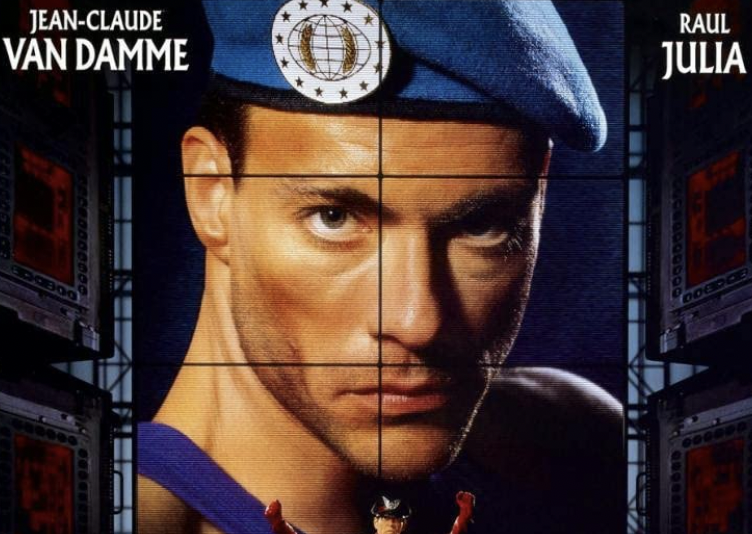
Jean-Claude Van Damme is one of the best action stars Hollywood has even seen, so it was only logical that a guy who starred in dozens of Die Hard clones would eventually get to work with the film’s scribe himself, Stephen E de Souza, on an adaptation of Street Fighter. Outlandish and full of impressive fighting choreography, the '90s film made for an incredibly campy rework of the 2-D arcade fighter. Especially since it (awkwardly) favored the one American character as its lead over its Japanese protagonist. Still, Van Damme can sure kick ass.
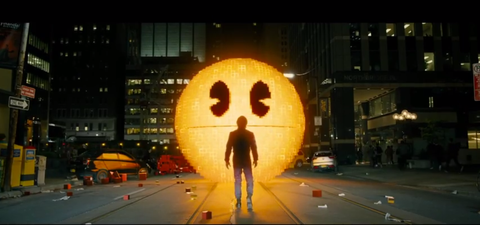
Bet you didn't think Pixels would be on here, huh? 2015 probably told you to hate anything and everything Adam Sandler. Well, it's 2021 and we like the Sandman again. Pixels is a loving, if... uneven ode to the arcade classics of the '80s (think: Pac-Man and Centipede). Plus, it stars Brian Cox and Peter Dinklage. And Michelle Monaghan. Yeah. Pixels deserves a replay.
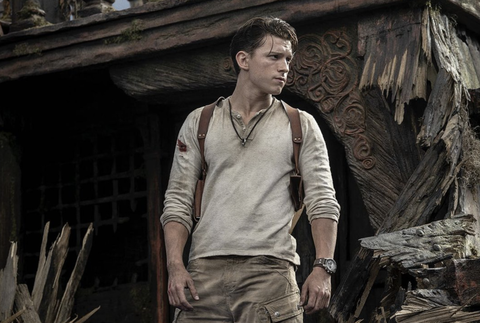
Uncharted had so much going for it. A genuine star in Tom Holland, who plays the leading adventurer, Nathan Drake. Mark Wahlberg as his co-star. Plus, an apt director in Ruben Fleischer, whose breakout film, Zombieland, is still massively rewatchable. We hate to report that Uncharted is half of what it could've been. Which means that there are still some quips, gargantuan action setpieces, and various acts of Tom Hollanding would seeing. It's just all wrapped up in a film with scattershot pacing and not much character development for its lead.

The creative team behind the Assassin's Creed film took the correct approach. Ubisoft, the game studio, decided to snag the creative reins of the project itself and attach a reliable talent who believed in the potential of the franchise. This talent, of course, was budding Hollywood leading man Michael Fassbender. What he did with the film may not have been exactly a box office pleaser, but it was an example of a video game movie that was done artfully, made with a deep, meticulous understanding of the game series’ lore.

Say what you will about Paul WS Anderson, but he created a world all his own in the Resident Evil film series. The movies, frustratingly, diverge greatly from the storytelling of the games, but Milla Jovovich has become something of a screen icon thanks to her enduring leading role in them. While they take a lot of liberties with the Resident Evil franchise, the world-building in the films is captivating enough to make these a stand-out in the genre.
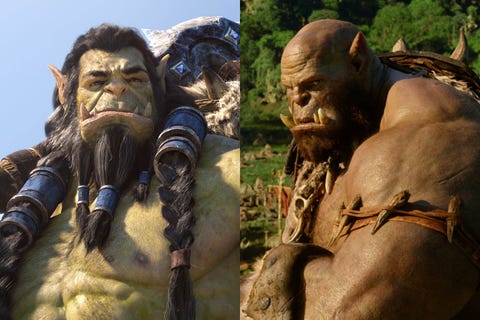
World of Warcraft is one of the most beloved video game series of all time. Its fan base is large, spanning generations of kids who, in some cases, have been playing it for decades. Duncan Jones’ take on the series showed, perhaps for the first time, what happens when a huge fan of a video game is given the keys to a film franchise. Jones is an outspoken WoW-head, and his knowledge of the series was apparent in this film.
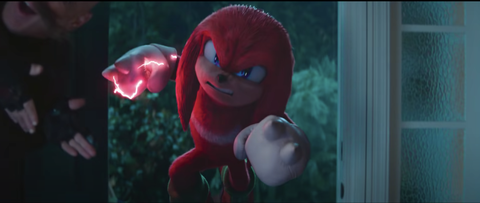
We hate to say it, but Sonic the Hedgehog 2 doesn't go quite as fast as its predecessor, losing some of wit and charm from the first outing. That said, Ben Schwartz's gleefully chaotic work as Sonic, with a superb Idris Elba added to the mix as the echidna Knuckles, makes Sonic the Hedgehog 2 firmly one of the better films on this list.
 Sure, the Mortal Kombat reboot was never going to reach the bloody, campy heights of its 1995 predecessor. But it's still a treat for gamers who grew up slicing and dicing back when the fighters were merely two-dimensional.
Sure, the Mortal Kombat reboot was never going to reach the bloody, campy heights of its 1995 predecessor. But it's still a treat for gamers who grew up slicing and dicing back when the fighters were merely two-dimensional.
 After Angelina Jolie’s lukewarm take on the franchise in the early 2000s, it seemed like Tomb Raider would never achieve its full potential onscreen. The series itself is extremely cinematic, and, aside from the burdensome exploitation and sexism in the games, it offers what could be a very strong woman-led Indiana Jones-type movie series. In 2018, Alicia Vikander starred in this much darker—and much more realistic—version of Tomb Raider, and she really nailed it.
After Angelina Jolie’s lukewarm take on the franchise in the early 2000s, it seemed like Tomb Raider would never achieve its full potential onscreen. The series itself is extremely cinematic, and, aside from the burdensome exploitation and sexism in the games, it offers what could be a very strong woman-led Indiana Jones-type movie series. In 2018, Alicia Vikander starred in this much darker—and much more realistic—version of Tomb Raider, and she really nailed it.
 The Super Mario Bros Movie is for kids. For. Kids. Please remember that, as you watch one mister Chris Pratt Mario cheese his way through Mushroom Kingdom. The Super Mario Bros Movie doesn't totally have a plot—does any Mario game ever veer too far from Mario-beats-Bowser, anyway?—so it leans on the hits. Meaning: a Mario Kart scene here, a Super Smash Bros moment there, and cameos that'll delight even the crabbiest of trolls. Just enjoy it, OK? Life's too short to dunk on an animated plumber.
The Super Mario Bros Movie is for kids. For. Kids. Please remember that, as you watch one mister Chris Pratt Mario cheese his way through Mushroom Kingdom. The Super Mario Bros Movie doesn't totally have a plot—does any Mario game ever veer too far from Mario-beats-Bowser, anyway?—so it leans on the hits. Meaning: a Mario Kart scene here, a Super Smash Bros moment there, and cameos that'll delight even the crabbiest of trolls. Just enjoy it, OK? Life's too short to dunk on an animated plumber.
 Final Fantasy is another major gaming franchise that has a subculture all its own. For decades, fans wondered how their beloved RPG would look onscreen. Advent Children, the only film on this list that’s not live-action, answered that call in 2005. The imaginative and at times fully bonkers take on the beloved Square Enix series used computer-generated 3D graphics instead of real life actors, and it really blurred the line between film and gaming.
Final Fantasy is another major gaming franchise that has a subculture all its own. For decades, fans wondered how their beloved RPG would look onscreen. Advent Children, the only film on this list that’s not live-action, answered that call in 2005. The imaginative and at times fully bonkers take on the beloved Square Enix series used computer-generated 3D graphics instead of real life actors, and it really blurred the line between film and gaming.
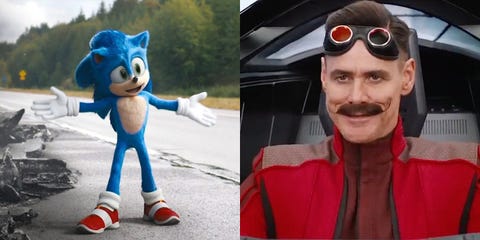 Listen, if I could give the top spot to "Speed Me Up"—the song of last summer, this summer, next summer, and the summer after that—I would. But my editor won't let me. Instead, props goes to the movie itself, which proved to be a surprisingly fun outing for the blue guy, despite months of production troubles. For better or worse, we'll probably always remember Sonic the Hedgehog as the last movie we saw in theatres before the pandemic.
Listen, if I could give the top spot to "Speed Me Up"—the song of last summer, this summer, next summer, and the summer after that—I would. But my editor won't let me. Instead, props goes to the movie itself, which proved to be a surprisingly fun outing for the blue guy, despite months of production troubles. For better or worse, we'll probably always remember Sonic the Hedgehog as the last movie we saw in theatres before the pandemic.
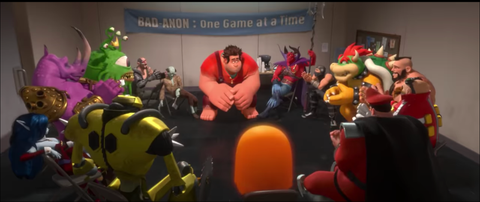 OK. Wreck-It Ralph isn't technically a video game movie, in that Wreck-It Ralph doesn't exist as a game IRL. But the film imagines a world where arcade game characters meet up in a digital romper room, leading to a celebration of a film about video games and the bad guys that inhabit them. It's weird. It's wild. It has heart. And a Bowser cameo. What else do you need?
OK. Wreck-It Ralph isn't technically a video game movie, in that Wreck-It Ralph doesn't exist as a game IRL. But the film imagines a world where arcade game characters meet up in a digital romper room, leading to a celebration of a film about video games and the bad guys that inhabit them. It's weird. It's wild. It has heart. And a Bowser cameo. What else do you need?
 Pokémon as a franchise has always been a stalwart: there are the cards and the TV series and the animated films. Oh, and then there's the game itself, which has defined an entire generation. Even with all that, when Detective Pikachu was announced, there was some (rightful) skepticism about what a live-action film starring the beloved creatures might look like. Not only did the visuals deliver, but Ryan Reynolds and Justice Smith make the outing a blast to watch. Pokémon Go stream it now.
Pokémon as a franchise has always been a stalwart: there are the cards and the TV series and the animated films. Oh, and then there's the game itself, which has defined an entire generation. Even with all that, when Detective Pikachu was announced, there was some (rightful) skepticism about what a live-action film starring the beloved creatures might look like. Not only did the visuals deliver, but Ryan Reynolds and Justice Smith make the outing a blast to watch. Pokémon Go stream it now.
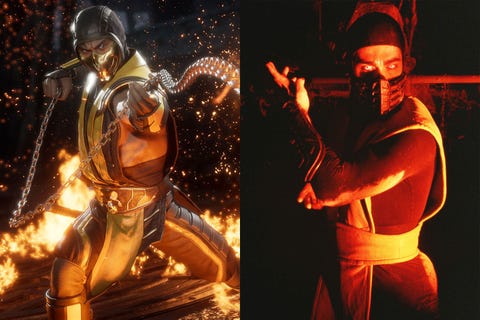 What is there to say about the Mortal Kombat movie that hasn’t already been said? It’s campy. It’s exciting. It’s dumb. It’s brilliant. The spirit of the '90s is alive in full force in this film, and to this day, the techno-futuristic-cage-match title still stands as the most satisfying video game movie to date. Sure, it may not be the most “high-art” example on this list. But Mortal Kombat perfectly captured the essence of a game franchise, and it cannot be beat.
What is there to say about the Mortal Kombat movie that hasn’t already been said? It’s campy. It’s exciting. It’s dumb. It’s brilliant. The spirit of the '90s is alive in full force in this film, and to this day, the techno-futuristic-cage-match title still stands as the most satisfying video game movie to date. Sure, it may not be the most “high-art” example on this list. But Mortal Kombat perfectly captured the essence of a game franchise, and it cannot be beat.